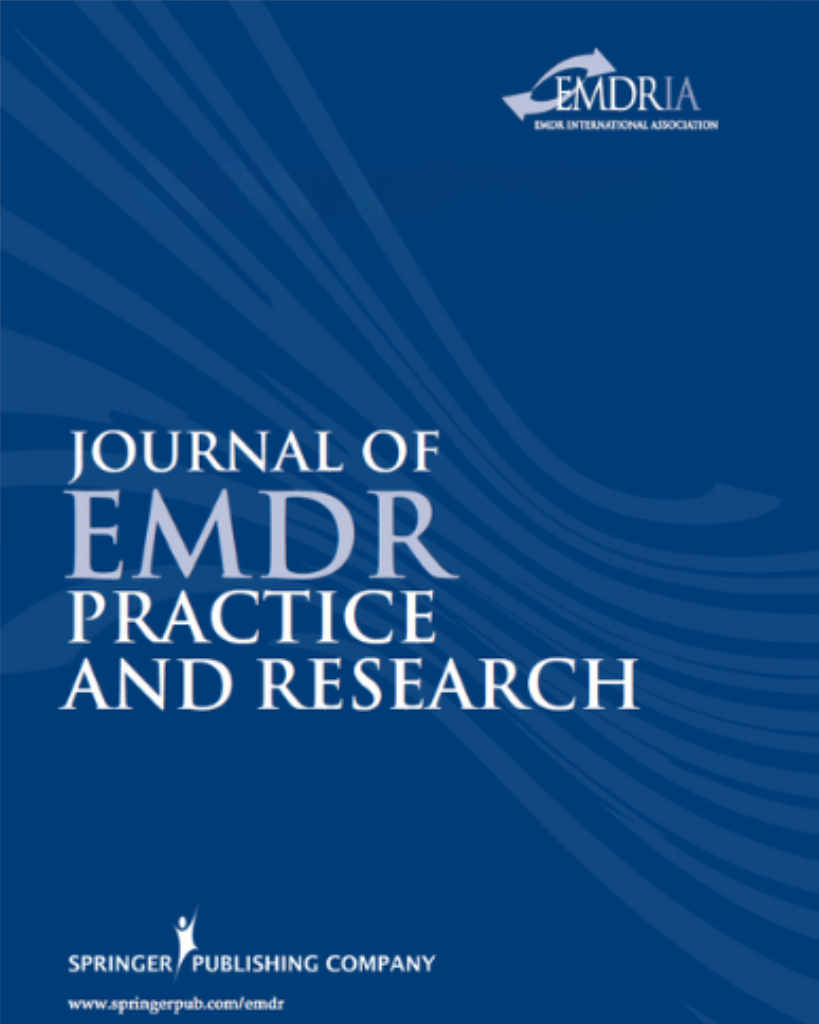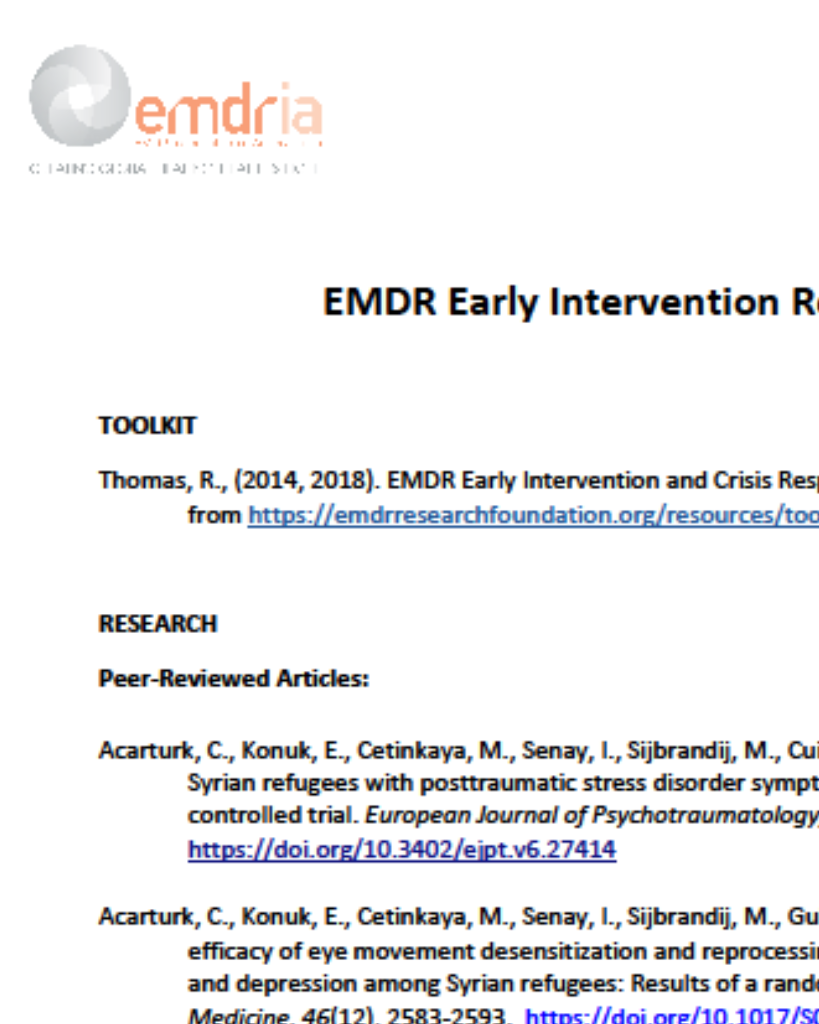Psychophysiological Studies of EMDR
This article describes research on the effects of eye movements during authentic EMDR sessions of chronic PTSD in refugees of war and torture.
Article Abstract
“Eye movement desensitization and reprocessing (EMDR) has been established as an efficacious therapy for posttraumatic stress disorder (PTSD). The working mechanism of the procedure is, however, still partly unknown. It is therefore important to explore the physiological effects of eye movements and alternative bilateral stimulation. This article describes our research on the effects of eye movements during authentic EMDR sessions of chronic PTSD in refugees with war and torture experiences and places this research in the context of other findings. The findings point to definite physiological effects of eye movements; namely a dearousal with increased finger temperature and changes in the balance between the parasympathetic and sympathetic autonomous nervous systems.”
—Description from publisher
Article Access
Open Access
Söndergaard, H. P., & Elofsson, U. (2008). Psychophysiological Studies of EMDR. Journal of EMDR Practice and Research, 2(4), 282–288. https://doi.org/10.1891/1933-3196.2.4.282
About the Journal
The Journal of EMDR Practice and Research is a peer-reviewed publication devoted to integrative, state-of-the-art papers about Eye Movement Desensitization and Reprocessing. It is a broadly conceived interdisciplinary journal that stimulates and communicates research and theory about EMDR, and their application to clinical practice. The Journal of EMDR Practice and Research is the Official Publication of the EMDR International Association.
Date
November 1, 2008
Creator(s)
Hans Peter Söndergaard, Ulf Elofsson
Topics
Tragedies
Client Population
Immigrants/Refugees
Practice & Methods
BLS, Neurobiology
Extent
7 pages
Publisher
Springer Publishing Company
Rights
Copyright © 2008 EMDR International Association
APA Citation
Söndergaard, H. P., & Elofsson, U. (2008). Psychophysiological Studies of EMDR. Journal of EMDR Practice and Research, 2(4), 282–288. https://doi.org/10.1891/1933-3196.2.4.282
Series
2
Installment
4
Audience
EMDR Therapists
Language
English
Content Type
Peer-Reviewed
Original Source
Journal of EMDR Practice and Research
Access Type
Open Access





